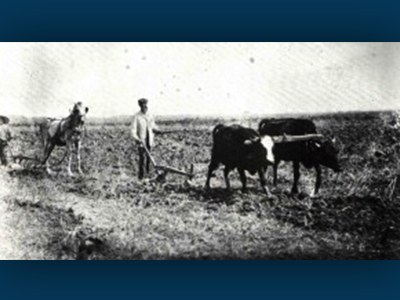
January 21, 1882
The groundwork is laid for the First Aliyah with the formation of the BILU group at a meeting at the home of Israel Belkind in Kharkov, Ukraine. Adopting the name BILU, from the biblical verse Beit Yaakov lekhu venelkha (“House of Jacob let us go,” Isaiah 2:5), the group was founded by thirty students who were responding to the violent waves of pogroms that swept through Russia beginning in April 1881. The founders of the movement set their goals to be: a return of the Jewish people to the Land of Israel; a rejection of the national spiritual revival in favor of a physical settlement in Palestine; a dismissal of European Jewish emancipation as a guarantee of Jewish survival; the development of both cultural centers and physical settlement in Palestine; the recognition that territory was needed for Jewish survival.
One early member, Ze’ev Dubnow, the brother of noted Diaspora nationalist and historian Simon Dubnow remarked, “The aim of our journey is rich in plans. We want to conquer Palestine and return to the Jews the political independence stolen from them two thousand years ago. And if it is willed, it is no dream. We must establish agricultural settlements, factories, and industry. We must develop industry and put it into Jewish hands. And above all, we must give young people military training and provide them with weapons. Then will the glorious day come, as prophesied by Isaiah in his promise of the restoration of Israel. With their weapons in their hands, the Jews will declare that they are the masters of their ancient homeland.” (Kressel, Getzel. “Bilu.” Encyclopaedia Judaica. Ed. Michael Berenbaum and Fred Skolnik. 2nd ed. Vol. 3. Detroit: Macmillan Reference USA, 2007. 700-701)
The group first called itself DAVYU, Hebrew initials for Dabber el Benei Yisrael Ve-Yissa’u (“Speak unto the Children of Israel that they go forward,” Exodus 14:15), The name was changed to BILU because, according to Belkind, “instead of advising the people to go to Eretz Israel, we decided to go there ourselves.”
In the Spring of 1882, BILU members went to Constantinople (Turkey) where they set the preparation for gaining the Ottoman support for the establishment of Moshavot on Ottoman owned lands. When this failed, fourteen members led by Belkind left for Palestine, arriving in Jaffa on July 6, 1882. Upon their arrival, they began their agricultural studies in the first agricultural school in the country Mikveh Israel.
By 1884 their number increased to 48 though the Movement in Russia ceased to exist.
Some went to Nachalat Shiva in Jerusalem (first Jewish neighborhood outside the Old City Walls). Other went to Rishon Lezion and another small group founded Moshava Gedera (The photo shows BILU pioneers working at Gedera in 1910).
They experienced economic hardships, had many confrontations with Baron Edmond Rothschild’s clerks and were subjected to Arab hostilities. Some of the group left the country and returned to Russia. Of all the original members of the movement only one remained alive (Nenashe Meirovitz) to witness the establishment of the State of Israel.
They became part of the lore of the pioneering movements that renewed the settlement of Eretz Israel.
